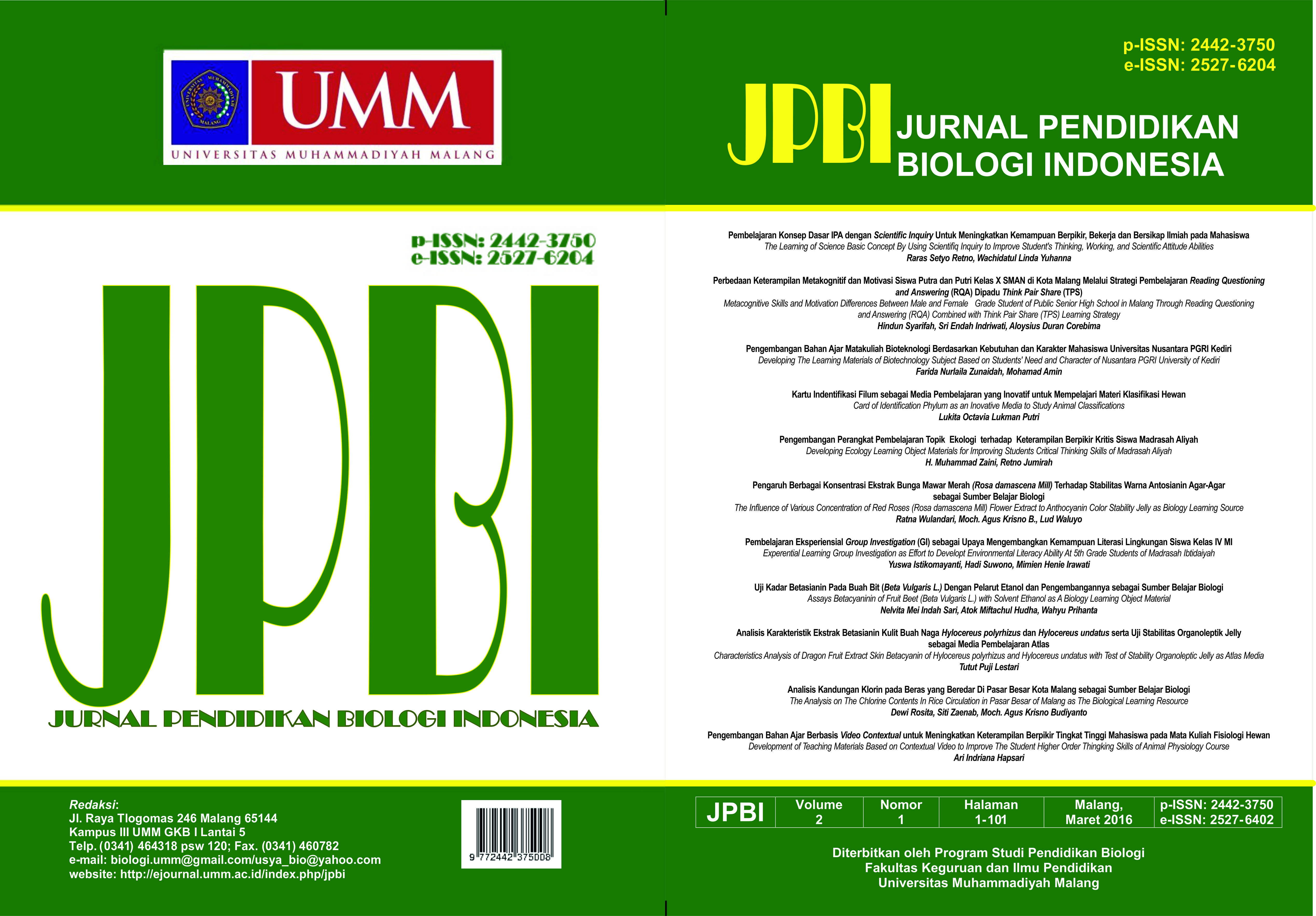BETACYANIN ASSAYS OF FRUIT BEET (Beta vulgaris L.) WITH SOLVENT ETHANOL AS A BIOLOGY LEARNING OBJECT MATERIAL
DOI:
https://doi.org/10.22219/jpbi.v2i1.3384Keywords:
Beet Fruit, Betacyanin, EthanolAbstract
Beet (Beta vulgaris L.) or often also known as beet root is a plant form that is similiar roots and tubers family Amaranthaceae. Physical characteristics of fruit bits are round like a potato tuber with a dark red-purple color and its fruit will be cut when the line visible in white with pink. In bits are main components of the pigment betasianin. Betasianin are dyes that cangive red color, can be found in fruits, flowers and vegetative tissues. Betasianin canbe used as natural dyes in food. The purpose of this study was to determine the anthocyanin content test on beet (Beta vulgaris L). This type of research is True Experimental Research. The study design used is The Posttest-Only Control Group Design. The design ofthis study using a completely randomized design (CRD). The solvent comprises ethanol percentage of 80%, 50%, 20% and 0% for the control treatment. The data in this study of value betasianin levels. Analysis of the data in this study using analysis of variance of the factors where the results of this study indicate the best treatment of data betasianin assay lies in ethanol with a percentage of 50% with a value of 0.089. This can have an influence because the volume ratio of water and ethanolis the same.Downloads
Download data is not yet available.
Downloads
Published
2016-07-22
Issue
Section
ICT, Learning Media, and Learning Resources
License
Authors who publish with JPBI (Jurnal Pendidikan Biologi Indonesia) agree to the following terms:
- For all articles published in JPBI, copyright is retained by the authors. Authors give permission to the publisher to announce the work with conditions. When the manuscript is accepted for publication, the authors agree to automatic transfer of the publishing right to the publisher.
- Authors retain copyright and grant the journal right of first publication with the work simultaneously licensed under a Creative Commons Attribution-ShareAlike 4.0 International License that allows others to share the work with an acknowledgment of the work's authorship and initial publication in this journal.
- Authors are able to enter into separate, additional contractual arrangements for the non-exclusive distribution of the journal's published version of the work (e.g., post it to an institutional repository or publish it in a book), with an acknowledgment of its initial publication in this journal.
- Authors are permitted and encouraged to post their work online (e.g., in institutional repositories or on their website) prior to and during the submission process, as it can lead to productive exchanges, as well as earlier and greater citation of published work (See The Effect of Open Access).

This work is licensed under a Creative Commons Attribution-ShareAlike 4.0 International License.


















